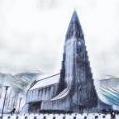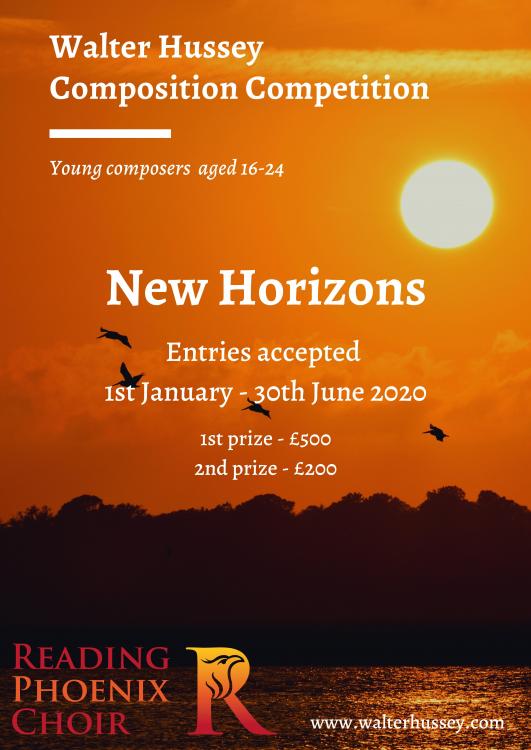Search the Community
Showing results for tags 'satb'.
-
In January of last year, four wildlife rescue organizations coordinated to catch a sick half-grown coyote who had been finding refuge under my porch. Coyotes are a protected species in Massachusetts, so before attempting a rescue, they had to get permission from the state. The day that they finally received permission, he disappeared. The temperature dropped to the teens, and we watched the forecast with growing alarm, worried we had missed our chance and he had frozen to death in a hole in the woods somewhere. Finally he reappeared. I saw his feet go by under the porch, and texted the team. Within thirty minutes, six people arrived and made a whispered plan to surround the porch from all sides. Armed with old comforters and sheets of siding we ran in from three directions and blocked off his exits, while other volunteers grappled for him with a catch pole through a basement window. After several tense minutes, with only the sounds of his panicked breathing, the indoor team hauled him through the window and into my cellar, head first. Everyone agreed that if we hadn't gotten him that day, he wouldn't have made it. He was suffering from secondary rodenticide poisoning. At some point in his short life, he had already eaten enough poisoned field mice or rats to be dying of poisoning himself. He was hypothermic, dehydrated, his blood wouldn't clot, and with his immune system nearly non-existent he was almost hairless from an overgrowth in the mites, bacteria, and fungi that are normally a natural and balanced part of the skin biome. He was probably under my porch because there was a little warmth coming through the foundation, ignoring his instinct to avoid humans because he was so desperately cold. After three months of specialist care, he was healthy enough to be released to the wild again. Because coyotes are social animals, and frequently use common trails, it's very probable that members of his family passed by my house in the days after his capture and read the story in the scents on scuffed leaves and churned snow. Thanks to Newhouse Wildlife, Friends of Horn Pond, Cape Ann Wildlife, and Berkshire Wildlife for all their work to advocate for him, to catch him, and to heal him for a return to the woods of New England. Rage forest daughter; Stand and sing. He is everywhere, a scent on snow. He is the unforgiven air. He is the curled leaves. He is everything. He will come back changed. He will come back again. The lost child returns in spring, Traveling over dark water; Stand and mourn forest daughter.
- 6 replies
-
- 3
-

-
- wildlife rescue
- satb
-
(and 2 more)
Tagged with:
-
Thanks for your thoughts! On a night of roses, stars bloom overhead. Miles ago and years away, a furnace burst into flame. The fox-bright black births a new point, smaller than a thought, a whisper of light. The universe is breathing, and we, heady moths, drunk on the scent, In and out, in and out.
-
I've been going back over old files and refreshing the formatting and sound files so the scores look a bit less dated. This piece is from 2012.
- 1 reply
-
- st. francis of assisi
- pope francis
-
(and 3 more)
Tagged with:
-
I wrote this piece ten years ago, but have just made a new multitrack recording of the parts, so I thought I would share it here. Yes, you are correct. The bass line is being sung by an alto dropped down a well. (GarageBand makes it possible for me to sing all the parts, but I have to use the transpose feature to record the lowest bass notes, which creates a little distortion to the sound quality). The sheep is a genius of place; why would she stray? Here is the homeland. Here, her mother's house. Feed my sheep. Lead them home. Let them rest. Sisters, all among the hills, chanting their Daily Office: "There the rain licks into little pools. There, a dip to hide new lambs." "Take my coat," she said. "You are a guest."
-
It's a long time that I hadn't composed a choral work a cappella. So, last month, I've composed this SSAATTBB piece with French lyrics. It's entitled 'Comme Une Rose' and it tackles three themes: The love relationship, through the metaphor of the rose, its scent and its thorns. Nature, through the wind that blows and scatters seeds, spreading life all over our Earth. Love, through a passionate declaration to the better half. So, this piece is just looking for its premiere! Do you like it? https://youtu.be/OqLnLF_yPDE
- 2 replies
-
- choir
- choral music
-
(and 3 more)
Tagged with:
-
I wrote this piece ten years ago, but just went through and made an mp3 with myself singing all the parts. (Pardon my bass line, and thank you autotune for allowing me to fake a bass part). In the last days, When the land is rolled up, And the seas are poured out, And every thing is put away, Come and sit with me, my old friend, And we'll watch are the stars are turned out, One by one.
-
I have written and arranged several pieces for all manner of wind ensembles during my time as an Army bandsman, but I had never ventured into the realm of choral work until now. I'm in the process of transitioning from a career in the military to civilian life, so the text seemed especially appropriate. Es wird meiner Seele lang zu wohnen bei denen die den Frieden hassen Ich halte Frieden aber wenn Ich rede so fangen sie Krieg an (Too long have I lived among those who hate peace I am for peace but when I speak they are for war) I recorded myself on all of the parts. I am admittedly not a real singer (professional tuba player), but it beats midi. I'm very interested in what sort of feedback you fine musicians have. I'm not experienced in submitting pieces for competitions or anything, so any advice would be great!
-
Today perhaps more commonly known by the title "Down to the River to Pray," this traditional African American spiritual was first published as "The Good Old Way" in 1867, two years after the end of the Civil War, and is believed to originate from the Tennessee, Arkansas, Mississippi area. A variation of the tune was popularized by the movie 'O Brother, Where Art Thou?' I wanted to familiarize people with the older version of the melody, since all the arrangements I have seen in recent years use the 'O Brother' version. As the text in the earliest published copies is very sketchily presented and 100% repetitive if taken at face value, (after the first verse, it just says, "Sister, etc." I took the liberty of modifying it slightly to add a little variety and sense of storytelling as well as harmonizing the different verses in different ways. The melody which begins at rehearsal mark C was whistled by Dick, last name unrecorded, a black pole-man on the steamboat Marion on the Ocklawaha River route in May of 1875, as transcribed in the book "Florida: Its Scenery, Climate, and History." I loved the idea of adding another musical source that would be completely novel to all but the music historians, and that in all probability the melody is Dick's own composition. There is just enough information about him that it is possible that someone researching family history may recognize him as their ancestor and add more detail to the story. I'd love to hear your thoughts! As I went down in the valley to pray, studyin' about that heav'nly day, when you shall wear the starry crown, Good Lord, show me the way. Oh, mourners, let's go down, let's go down, let's go down, Oh, mourners, let's go down, down in the valley to pray. As I went down in the valley to pray, studying' about that good old way, and who shall wear the wings and crown, Good Lord, show me the way. Oh, sisters, let's go down, hand in hand, let's go down, Oh, sisters, let's go down, down in the valley to pray. As I went down in the valley to pray, studying' about that good old way! And would you wear His robe and crown? Good Lord, show me the way. Oh, brothers, let's go down, let's go down, let's go down, Oh, brothers, let's go down, down in the valley to pray. Down, down, Oh let's go down, Good Lord, show me the way... As I went down, down to the valley, green swaying' trees, show me the way. As I went down in the valley to pray, studyin' about that good old way, and you shall wear that starry crown, Good Lord, show me the way. Oh, sinners, let's go down, let's go down, let's go down, Oh, sinners, let's go down, down in the valley to pray!
- 2 replies
-
- 1
-

-
- traditional
- down to the river to pray
-
(and 3 more)
Tagged with:
-
SATB, a cappella. This would work for a church service or a more secular event. For all the empty desks and voices missing from playgrounds across the United States. All the little angels rise. See how they rise? All the little angels rise. Tell me how they rise. They rise up to heaven with their rain boots on, puddle stompin’ then they’re gone. All the little angels rise. See how they rise? All the little angels rise. See how they rise? All the little angels rise. Tell me how they rise. They rise up to heaven a-playin' drums: pots and pans and kitchen tongs. All the little angels rise. See how they rise? All the little angels rise. See how they rise? All the little angels rise. Tell me how they rise. They rise up to heaven with their jammies on, rosy toes and then they’re gone. All the little angels rise. See how they rise?
- 5 replies
-
- gun violence
- school shootings
- (and 6 more)
-
Since Covid made singing in groups so unsafe, choirs have taken a real hit to their membership, and many are still smaller than they were before the pandemic. I wrote this piece to be performable by a small group. The range of the baritone part should be manageable by either tenors or basses, since they are generally the smallest sections in a choir, to help with balance issues. The baritone part does divide a bit for the sake of interest and to give any bass 2s a break from their high range, but as the piano and other parts are generally covering those splits, they can be done away with if a group only has a single male voice, or a conductor chooses to put all their tenors and basses on a single line to improve balance against larger soprano and alto sections. The ranges of the soprano and alto parts are also moderate enough that an alto 1 could sing soprano or a soprano 2 could sing alto in the case of unbalanced sections. I've mainly limited dynamics to mp and mf, since smaller groups are more likely to have blending and balance issues at very loud dynamics or sound timid at softer ones. I'd love to know your thoughts, particularly pianists! (I'm not a pianist). Does anything seem particularly awkward, or should be written for the other hand? Would the thorny accidentals at measure 63-64 be easier to sight-read at speed if I used the Cb and Bbb enharmonic equivalents, so those righthand notes were in paired thirds going up and down the scale? Thank you for your thoughts! Revelation 21 KJV 1 And I saw a new heaven and a new earth: for the first heaven and the first earth were passed away; and there was no more sea. 4 And God shall wipe away all tears from their eyes; and there shall be no more death, neither sorrow, nor crying, neither shall there be any more pain: for the former things are passed away. 5 And he that sat upon the throne said, Behold, I make all things new. And he said unto me, Write: for these words are true and faithful.
- 5 replies
-
- 2
-

-
- revelation 21:1-5
- environmental destruction
-
(and 7 more)
Tagged with:
-
Moderate difficulty and modest ranges for all vocal parts. There are a few notes of divisi for every part but the tenors. I'd love to hear what you think, and pianists, let me know if the piano reduction would be better with any notes moved to the other hand. (I'm not a pianist). Thanks for your thoughts! The text follows the lifecycle of the bumble bee. Unlike domesticated honey bees, out of the whole colony, only new bumble bee queens survive the winter each year. Each new pregnant queen must carefully select a nest site after emerging for winter dormancy and start a colony all alone. For the first few weeks of spring, she must divide her time between laying eggs, gathering and preparing nectar and pollen, and warming and caring for her new offspring. If her nest site proves to be too far from a continual succession of blooms while the weather is still cool, her babies will succumb to the cold while she is away from the nest gathering food for them. Until the first generation of workers are old enough to take over some of the tasks of caring for the group, allowing for grocery trips further from home, and warm temperatures and the flood of summer flowers makes comfort and food supplies more sure, her nest's survival is tenuous. But if all goes well, by the time summer wanes, hundreds of her children will be busy among the blooms, and her own new queens will be preparing to disperse and carry on the cycle the next year. It's also important to remember that although we may see hundreds of bumble bees out in the garden, genetically speaking, each nest counts as one individual. One reproducing queen: one set of genes being passed down. All those workers don't generally count. So when you are thinking about the survival of a bumble bee species, you need not just lots of bumble bees, but lots of bumble bee nests in an area in order to have the genetic diversity that allows the population to continue in a healthy way. Too few nests, each headed by a single reproducing queen, and even though you see tons of bees on the landscape, they may be in danger of slow local extinction from inbreeding. You can help! A mowed lawn, a sea of mulched flower bed, or a paved parking area is not bee habitat. None of these provide nesting sites or food. Bumble bees need drifts of fallen leaves to hide their nests under in summer, and for the queens to pass the winter under. So don't rake at least part of your yard, or compost your leaves in a big pile on site. Thick clumps of long grasses are also popular nesting sites. If you could hide a rabbit in it, it's probably thick and clumpy enough. Cohabitating with chipmunks in their holes is also popular, so tolerate those cute little guys in your yard. And be sure to have plenty of native flowering plants in your yard. Our local bees evolved with our local plants. Often plants from other continents don't have the right flower shape for them to access, bloom at the wrong time, or don't provide the right nutrition they need to thrive. Humans mess around with breeding flowers for color and size so much, that often we end up breeding flowers that actually contain no nectar or pollen. Oops! No food there at all!
- 7 replies
-
- 1
-

-
- a cappella
- flowers
-
(and 6 more)
Tagged with:
-
Firstly, it has been awhile. I have to say I've missed the companionship, the camaraderie this site offered, and I've thought of many of you often over the past couple of years. So many times my hand has lingered over the ENTER key after I'd typed in this website's address — only to close my browser with a sad sigh. I can't tell you why because I don't understand it myself. Poignant memories of better days, perhaps? I can say these past 2 years have been difficult for me (and loads of others, I'm sure). The pandemic, the lockdown, the isolation... it took a pretty heavy toll on my mental health. My muse has been utterly silent. Utterly silent. Not a single note written or even hummed. I began to wonder if my days as a composer had ended for good. Thankfully — as you obviously guessed — that turned out not to be the case, and I finally broke my composing fast with this choral piece of a poem by Tolkien. I can slowly feel the music begin to stir inside me once more. Anyway, enough about my sad, sorry life. I hope this piece brightens your day and lifts your spirits. I'm rusty and out of practice, but I cannot tell you how good it feels to stretch these old composing muscles again! The recording is a bit pitchy in places (I had to perform all of the parts myself); hopefully it won't damage your listening experience too much. Thank you all in advance for your time. If you have questions about the harmonies and scales employed here, all you need do is ask. (In fact, I don't even care if you listen. Just a comment from you telling me how life's been over the past 2 years would be simply amazing!) Ah, it feels good to be back, guys! Very good, indeed.
-
Hi all, Any comments would be greatly appreciated, particularly on the piano part as I'm not a pianist. I wanted to write something that would give the pianist a chance to shine, but also am aware that pay for professional accompanists is low for all that they do, and that it just isn't possible to ask them to spend hours practicing a single three-minute piece for a single concert if they are going to make a living. If thinning down some of the fast chords would be a good idea for the sake of practicality, pianists, let me know. I don't want to go any slower than this tempo; the choir would risk running out of air. There is a lot of beautiful, slow music for choirs, so fun, fast pieces are always in demand to balance out a concert program. The text describes the mating dance of a cloud of solitary wasps, observed by American husband and wife entomology team Phil and Nellie Rau near St. Louis in the early 1900s. "The whole was not a helter-skelter commotion, but a merry whirl to the music of a faint, eerie hum of many wings, with every few moments a rather musical crescendo, which sounded like “zip!”, when a whirling pair would suddenly dash off at triple speed on the wing, in the final fling of joyful abandon..." - from"Wasp Studies Afield," published 1918. Furtak-Sun Dancing.pdf
-
This is a piece I wrote for a competition in my area. I entered it in the vocal ensemble category, here is the description I had to write for my submission: "The poem which was used as the text for this piece deals with themes of heaviness and despair. While the music is written in the major, a mode some would consider to have connotations of lightness, it is here used to convey a sense of hopeful melancholy. The poem speaks of a weight associated with winter, and of a despair and questioning of existence. Due to this, it could be that Emily Dickinson was describing a kind of seasonal depression, a heaviness that’s associated with winter and is easier to bring to mind when your surroundings suggest it. Another reading is that she is speaking on the inevitability of death, and how that sense of despair is an unavoidable part of the human experience." Please let me know what you think of it, feedback is extremely valuable to me and I really like hearing other peoples thoughts on my music. There's a certain Slant of light.mp3
- 2 replies
-
- feedback wanted
- competition
-
(and 2 more)
Tagged with:
-
Here's one of the first choral pieces I've ever completed. Feedback would be great, thanks.
- 7 replies
-
- 4 part writing
- latin
-
(and 4 more)
Tagged with:
-
10 My beloved spake, and said unto me, Rise up, my love, my fair one, and come away. 11 For, lo, the winter is past, the rain is over and gone; 12 The flowers appear on the earth; the time of the singing of birds is come, and the voice of the turtle is heard in our land; 13 The fig tree putteth forth her green figs, and the vines with the tender grape give a good smell. Arise, my love, my fair one, and come away.
-
Hey, I have written some hymns and I have been trying to get them transcribed to sheet music in a Bach Chorlaes (SATB) style format. Here is a rough draft of the score and a midi file, if anyone can help, please send me a message in the chat. Lord Touch My Eyes.mid
-
- piano
- bach chorales
-
(and 1 more)
Tagged with:
-
Some info about this piece: It’s based off of the poem by Paul Laurence Dunbar titled ‘Invitation To Love’. Unfortunately because of the program I use the performers in the audio file don’t sing the lyrics (words to the poem). This is the first piece of music I’ve written for a vocalist. Typically I only do instrumentalists and I didn’t know a lot at all about vocalists when I wrote this. I am essentially teaching myself, so if anyone has advice for writing for vocalists please help me out! Hope you enjoy!
-
The text is the Spanish language version of the quote that starts Toni Morrison's "Beloved." Since she died this August, I was thinking about her books. Llamaré al que no era mi pueblo, pueblo mío; y a la no amada, amada. I will call the one who was not my people, my people; and the unloved, beloved.
- 6 replies
-
- biblical text
- spanish
-
(and 2 more)
Tagged with:
-
Happy New Year everybody, Today is the first day of submissions for the Walter Hussey Composition Competition (with entries closing on June 30th). The competition is free to enter, and this year is only open to composers aged 16-24 on June 30th 2020. There are two cash prizes available for the winning entrants, and the work will be premiered by Reading Phoenix Choir in March 2021. For full details, visit www.walterhussey.com but in brief: - The theme is New Horizons - SATB to SSAATTBB plus solo lines if you want - Ideally unaccompanied - Ideally <3 minutes (the choir sing everything from memory) - Entry is by submitting a pdf and accompanying audio file (anything from rubbish midi to a multitrack MP3 will do) to info@walterhussey.com - Maximum two entries per person Hopefully lots of you will decide to enter!
-
It may be November, but church musicians have been thinking about Christmas music for months! Ho-ho-ho!
- 2 replies
-
- quartet
- arrangement
-
(and 5 more)
Tagged with:
-
I'd love to hear any thoughts you have about this piece, particularly about the clarity of the piano reduction. Ideally this would be performed a cappella, but it's nice to have a piano reduction for rehearsal or in case the singers need some support. There is some part crossing between the sopranos and altos. It doesn't go out of range for anyone and I liked the way the lines flowed for each part better this way. Any enharmonics you would mark differently? Psalm 133: 1 Behold, how good and how pleasant it is for brethren to dwell together in unity! Thanks for taking the time to listen! Here's a youtube demo video with the score rolling by: [EDIT 12/29/24 switched out the previous midi demo video for one with multitrack recording of me singing all the parts]
-
So I cannot sleep and I composed this Agus Dei. Not gonna be perfect and will continue working on it. Attached are the audio and pdf score file
-
I was wondering if someone could give some tips on what instruments to boost the bass range of an orchestra, currently I am using EWQLSO and am somewhat limited on the range of certain instruments. Also wondering if they could direct me towards which instruments play which clefs in soprano, alto, tenor, bass.
- 4 replies
-
- question
- arrangement
-
(and 8 more)
Tagged with:








